#Carrozzeria Touring Ltd
Photo

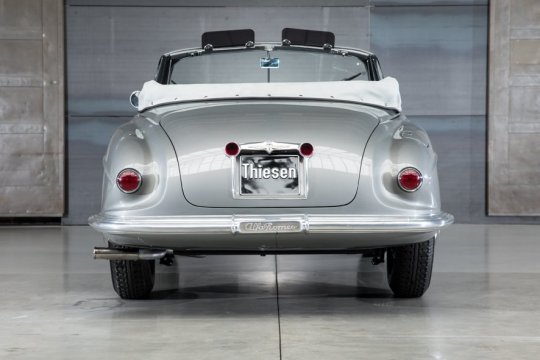

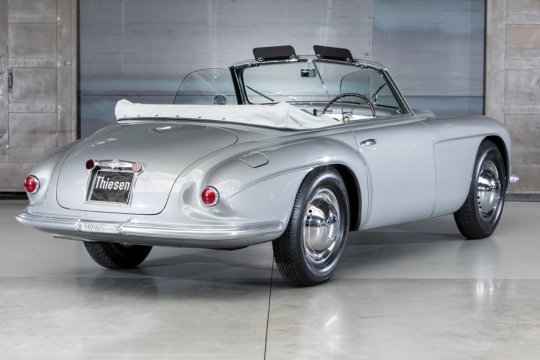
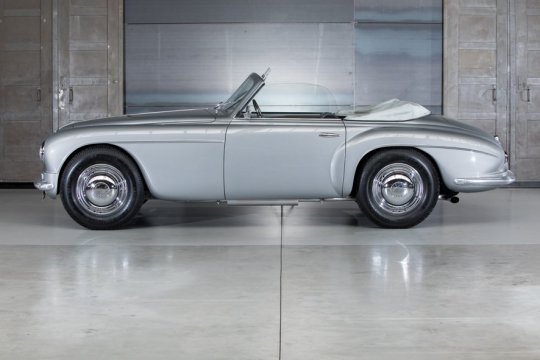
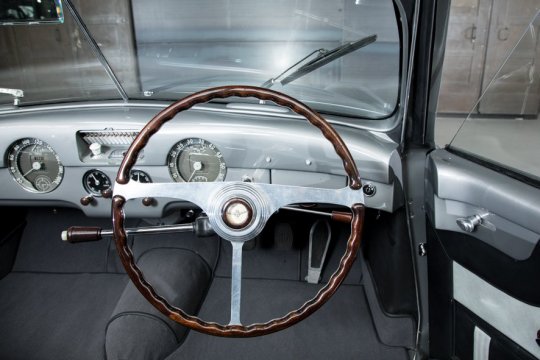

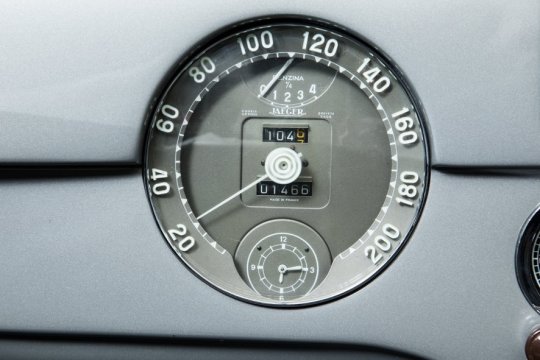

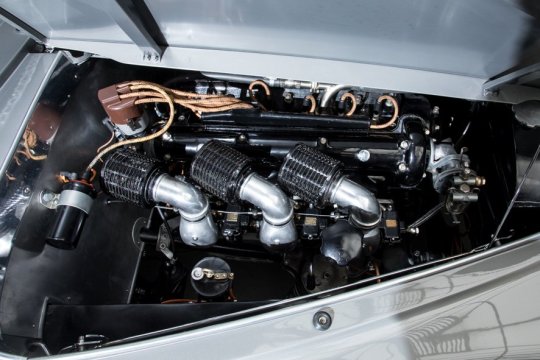
Alfa Romeo 6C 2500 SS Villa d`Este Spider (one-off)
With chassis number 915881, Touring built a single convertible called “Villa d Este” on a short SS chassis and presented it in 1950 at the Turin Motor Show. This vehicle had 4 Italian owners before it disappeared and was entered in the register as "destroyed" on June 1956.The chassis number 915828 was delivered to Peru on a short SS chassis in 1950 as a convertible and reappeared in Italy in 1993 as the Villa d'Este Coupe. Carrozzeria Touring Ltd. completely dismantled the vehicle from 2013 to 2017, restored the complete mechanics (matching numbers) and, with the involvement of the best specialists, put an exact reconstruction of the destroyed Villa d`Este Cabriolet on the wheels. Note the subtleties such as the cigarette dispenser and the large tool box that the original vehicle had!
38 notes
·
View notes
Text
Global Luxury Car Coachbuilding Market Research Report 2026
Summary - A new market study, titled “Global Luxury Car Coachbuilding Market Insights and Forecast to 2026” has been featured on WiseGuyReports.
Luxury Car Coachbuilding market is segmented by Type, and by Application. Players, stakeholders, and other participants in the global Luxury Car Coachbuilding market will be able to gain the upper hand as they use the report as a powerful resource. The segmental analysis focuses on production capacity, revenue and forecast by Type and by Application for the period 2015-2026.
Segment by Type, the Luxury Car Coachbuilding market is segmented into
Hatchback Style
Straight Back Style
Segment by Application, the Luxury Car Coachbuilding market is segmented into
Domestic Vehicles
Commercial Vehicles
Also Read: https://icrowdnewswire.com/2020/10/30/luxury-car-coachbuilding-market-global-industry-analysis-by-size-share-growth-trends-and-forecast-2020-2026/
Regional and Country-level Analysis
The Luxury Car Coachbuilding market is analysed and market size information is provided by regions (countries).
The key regions covered in the Luxury Car Coachbuilding market report are North America, Europe, China, Japan, South Korea and India. It also covers key regions (countries), viz, the U.S., Canada, Germany, France, U.K., Italy, Russia, China, Japan, South Korea, India, Australia, Taiwan, Indonesia, Thailand, Malaysia, Philippines, Vietnam, Mexico, Brazil, Turkey, Saudi Arabia, U.A.E, etc.
The report includes country-wise and region-wise market size for the period 2015-2026. It also includes market size and forecast by Type, and by Application segment in terms of production capacity, price and revenue for the period 2015-2026.
Competitive Landscape and Luxury Car Coachbuilding Market Share Analysis
Luxury Car Coachbuilding market competitive landscape provides details and data information by manufacturers. The report offers comprehensive analysis and accurate statistics on production capacity, price, revenue of Luxury Car Coachbuilding by the player for the period 2015-2020. It also offers detailed analysis supported by reliable statistics on production, revenue (global and regional level) by players for the period 2015-2020. Details included are company description, major business, company total revenue, and the production capacity, price, revenue generated in Luxury Car Coachbuilding business, the date to enter into the Luxury Car Coachbuilding market, Luxury Car Coachbuilding product introduction, recent developments, etc.
The major vendors covered:
Carrozzeria Touring Superleggera
Italdesign Giugiaro
Pininfarina
Zagato Milano
Carrosserie Akkermans
Moal Coachbuilders
Motorima
Ken Okuyama Cars
Carrozerria Castagna
Fioravanti
Ken Okuyama Cars
FOR MORE DETAILS: https://www.wiseguyreports.com/reports/5659556-global-luxury-car-coachbuilding-market-insights-and-forecast-to-2026
About Us:
Wise Guy Reports is part of the Wise Guy Research Consultants Pvt. Ltd. and offers premium progressive statistical surveying, market research reports, analysis & forecast data for industries and governments around the globe.
Contact Us:
NORAH TRENT
Ph: +162-825-80070 (US)
Ph: +44 2035002763 (UK)
0 notes
Text
Eight Foreign Favorites from the 2018 Greenwich Concours d’Elegance
GREENWICH, Connecticut — The Greenwich Concours d’Elegance continued its long-standing tradition of taking over Roger Sherman Baldwin Park in the heart of Greenwich, Connecticut for 2018. For the 22nd year in a row, the show paid tribute to classic and current American iron for the first day, while the second day focused on selects from foreign automakers. Here are eight favorites from day two.
1. 1934 SS1 “Walmsley Roadster”
History heralds it as the birth of the first Jaguar sports car, its bespoke aluminum body inspiring some of the company’s most coveted design cues, such as the SS100, and the post-war Jaguar XK120. Jaguar’s love affair with the convertible sports car wouldn’t be if it wasn’t for this very car, the original 1934 SS1 “Walmsley Roadster.” In 1922, a young William Lyons and William Walmsley came together to start the Swallow Sidecar Company, eventually morphing into SS Cars Ltd. Then, in 1934, Mr. Walmsley sold his entire share of the company as he retired. To go off with a bang, he commissioned a one-off car just for himself. This type SS1, is that very car. Power comes from a 2.5-liter “side valve” straight-six, that later served as a template for Jaguar’s legendary inline-six through the last half of the 20th century.
2. 1937 BMW 328 Roadster
BMW’s earliest successes may be attributed to the manufacturing of wartime fighter airplane engines and cars like the Isetta, the original “Dixi,” and the 507. But the Type 328 roadster brought the company worldwide recognition for performance and motorsports in the mid-to-late 1930s. BMW produced only 464 total examples between 1936 and 1940. With over 100 high title wins, including the Mille Miglia and 24 Hours of Le Mans in the late 1930s, the 328 proved what BMW was capable of. This specific example is a competition model from 1937, featuring magnesium brakes, and a significantly more powerful six-cylinder with 140 horsepower.
3. 1957 AC Ace Bristol
The AC Ace Bristol is the precursor to the legendary AC Cobra. British automaker AC Cars set off to make an impressionable sports car following World War II. So in 1953, the company created the AC Ace. Inspired by the Carrozzeria Touring of Italy-designed Ferrari 166 MM Barchetta, its simplistic and fluid design, excellent handling, and successes in Le Mans in 1957 and 1958 caught the attention of a young, Carroll Shelby. Believing the six was still daft and dated for performance, Shelby approached AC’s owner, Charles Hurlock in 1961, pitching the idea of slotting Ford’s new-at-the-time “Windsor” 289 cubic inch V-8 under the hood as an experiment. Ford agreed to offer up its newest V-8, looking to compete directly with Chevrolet’s Corvette. And as they say, from this point on, the rest is history.
4. 1957 Facel Vega FV2B Convertible
Born from World War II wartime efforts, French company Facel S.A. originally produced steel furniture and other various components, mostly for military airframe manufacturer, Bronzavia Industrie. After WWII, Facel’s military contracts shriveled up. So, the company got into the business of making bodies for other coachbuilders its own line of ultra-luxurious, low-production vehicles for the 1950s. The Facel Vega was its signature debut, a big-bodied two-door known for period-relevant unbridled luxury, exceptional workmanship, and incredible performance thanks to its 340-horsepower Chrysler Hemi V-8. Primarily a hardtop top pillarless coupe, only 11 convertibles were made since they suffered structural rigidity issues. This car is one of those five known left and is said to be the only Facel Vega droptop in North America. After undergoing a complete restoration, it later sold for $231,000 at Pebble Beach in 2009.
5. 1957 Volga GAZ-M21V
It’s not often one gets to see a “Commie Car” in the United States, especially one from the Soviet Union era. At the height of when this 1957 GAZ-M21V Volga was built, McCarthyism’s Red Scare had just settled in, eliminating any chance of seeing any U.S. streets. But if you lived in the Soviet Union in the mid-1950s, you owned this luxury Volga because of your job or political status. It was a symbol of success in Soviet society and so respected, astronaut Yuri Gagarin was gifted one following his historic 1961 flight into space. Volgas purposely featured a high ground clearance and rugged suspension for rough Soviet “roads,” while the engine was designed specifically to be durable and forgiving, along with innovative rust-proofing. Even though few Soviet citizens could afford one, around 32,000 “Series I” cars made it off the assembly line, costing 17,400 rubles, when the average yearly salary was 8,700.
6. 1959 Saab 93B
The Saab 93B is anything but your typical and sad “Saab story.” The 93B is the automaker’s second model ever, but also the company’s first most-successful selling model exported in mass quantities, with most arriving in the U.S. Famed Swedish designer, Sixten Sason, responsible for the Saab 92, 93, 95, 96, 99, and even the Sonett, along with many Saab aircraft, Hasselblad cameras, and Electrolux vacuum cleaners, penned its design. The Saab 93B surfaced to one-up a new three-cylinder car from its German competitor, DKW, subsidiary of Auto Union (the precursor to what we know as Audi). The Saab 93B featured a more powerful engine, excellent handling from the use of coil springs instead of torsion bars, and one of the earliest 12-volt electrical systems. This made it a popular choice in Swedish and Finnish rallying motorsports, eventually taking a few wins at the Mille Miglia and 24 Hours of Le Mans. Road & Track at the time in 1957 credits the 93B for establishing Saab as a viable automaker in the United States. With 52,731 made between 1956 and 1960, they sold for a cool $1,895, or the equivalent to around $17,800 today.
7. 1960 Lancia Flaminia GT
Built by a car company often referred to as the “Italian Mercedes-Benz,” Lancia produced the Flaminia between 1957 and 1970, serving as the company’s replacement flagship model for the Aurelia. Its flagship status made it so prestigious, that the Flaminia was the closest to an “Italian S-Class” with stretched four-door Pininfarina-made variants serving as transportation for Italian heads of state. The Flaminia came in three forms: sedan, coupe, and cabriolet. This Flaminia GT, with its shortened coupe body by Carrozzeria Touring, was more for personal transport for the wealthy. The entire Flaminia lineup featured an updated version of the world’s first production V-6 engine, originally from the Aurelia, with the GT receiving the most powerful version of the 2.5-liter version, thanks to a triple-carburetor setup, yielding 140 horsepower. Power went to the rear wheels via a four-speed transaxle.
8. 1964 Maserati 3500 GTi Spyder
When the Maserati 3500 GT first came about, it mainly bounced off the company’s efforts and successes in Formula 1 in the early 1950s with the desire to enter the consumer market. Chief engineer Giulia Alfieri sought to design a completely-new 3.5-liter six-cylinder engine for the company’s intent to participate in the world’s most daunting endurances races. But that wasn’t enough to justify the new engine, so the company decided to build a completely new two-door grand touring sports car, after learning that a market does exist from previous, limited production forays into the grand tourer space. That new car was the 3500 GT, available in coupe and convertible form. While Carrozzeria Touring designed the coupe, other renowned Italian design house, Vignale, penned the Spyder. The “i” in the GTi stands for the introduction of a Lucas mechanical fuel injection system (in before “Prince of Darkness” jokes) and with a standard five-speed manual. It ended up being Maserati’s first successful selling model, establishing its love for the “Gran Turismo” name.
0 notes
Text
Eight Foreign Favorites from the 2018 Greenwich Concours d’Elegance
GREENWICH, Connecticut — The Greenwich Concours d’Elegance continued its long-standing tradition of taking over Roger Sherman Baldwin Park in the heart of Greenwich, Connecticut for 2018. For the 22nd year in a row, the show paid tribute to classic and current American iron for the first day, while the second day focused on selects from foreign automakers. Here are eight favorites from day two.
1. 1934 SS1 “Walmsley Roadster”
History heralds it as the birth of the first Jaguar sports car, its bespoke aluminum body inspiring some of the company’s most coveted design cues, such as the SS100, and the post-war Jaguar XK120. Jaguar’s love affair with the convertible sports car wouldn’t be if it wasn’t for this very car, the original 1934 SS1 “Walmsley Roadster.” In 1922, a young William Lyons and William Walmsley came together to start the Swallow Sidecar Company, eventually morphing into SS Cars Ltd. Then, in 1934, Mr. Walmsley sold his entire share of the company as he retired. To go off with a bang, he commissioned a one-off car just for himself. This type SS1, is that very car. Power comes from a 2.5-liter “side valve” straight-six, that later served as a template for Jaguar’s legendary inline-six through the last half of the 20th century.
2. 1937 BMW 328 Roadster
BMW’s earliest successes may be attributed to the manufacturing of wartime fighter airplane engines and cars like the Isetta, the original “Dixi,” and the 507. But the Type 328 roadster brought the company worldwide recognition for performance and motorsports in the mid-to-late 1930s. BMW produced only 464 total examples between 1936 and 1940. With over 100 high title wins, including the Mille Miglia and 24 Hours of Le Mans in the late 1930s, the 328 proved what BMW was capable of. This specific example is a competition model from 1937, featuring magnesium brakes, and a significantly more powerful six-cylinder with 140 horsepower.
3. 1957 AC Ace Bristol
The AC Ace Bristol is the precursor to the legendary AC Cobra. British automaker AC Cars set off to make an impressionable sports car following World War II. So in 1953, the company created the AC Ace. Inspired by the Carrozzeria Touring of Italy-designed Ferrari 166 MM Barchetta, its simplistic and fluid design, excellent handling, and successes in Le Mans in 1957 and 1958 caught the attention of a young, Carroll Shelby. Believing the six was still daft and dated for performance, Shelby approached AC’s owner, Charles Hurlock in 1961, pitching the idea of slotting Ford’s new-at-the-time “Windsor” 289 cubic inch V-8 under the hood as an experiment. Ford agreed to offer up its newest V-8, looking to compete directly with Chevrolet’s Corvette. And as they say, from this point on, the rest is history.
4. 1957 Facel Vega FV2B Convertible
Born from World War II wartime efforts, French company Facel S.A. originally produced steel furniture and other various components, mostly for military airframe manufacturer, Bronzavia Industrie. After WWII, Facel’s military contracts shriveled up. So, the company got into the business of making bodies for other coachbuilders its own line of ultra-luxurious, low-production vehicles for the 1950s. The Facel Vega was its signature debut, a big-bodied two-door known for period-relevant unbridled luxury, exceptional workmanship, and incredible performance thanks to its 340-horsepower Chrysler Hemi V-8. Primarily a hardtop top pillarless coupe, only 11 convertibles were made since they suffered structural rigidity issues. This car is one of those five known left and is said to be the only Facel Vega droptop in North America. After undergoing a complete restoration, it later sold for $231,000 at Pebble Beach in 2009.
5. 1957 Volga GAZ-M21V
It’s not often one gets to see a “Commie Car” in the United States, especially one from the Soviet Union era. At the height of when this 1957 GAZ-M21V Volga was built, McCarthyism’s Red Scare had just settled in, eliminating any chance of seeing any U.S. streets. But if you lived in the Soviet Union in the mid-1950s, you owned this luxury Volga because of your job or political status. It was a symbol of success in Soviet society and so respected, astronaut Yuri Gagarin was gifted one following his historic 1961 flight into space. Volgas purposely featured a high ground clearance and rugged suspension for rough Soviet “roads,” while the engine was designed specifically to be durable and forgiving, along with innovative rust-proofing. Even though few Soviet citizens could afford one, around 32,000 “Series I” cars made it off the assembly line, costing 17,400 rubles, when the average yearly salary was 8,700.
6. 1959 Saab 93B
The Saab 93B is anything but your typical and sad “Saab story.” The 93B is the automaker’s second model ever, but also the company’s first most-successful selling model exported in mass quantities, with most arriving in the U.S. Famed Swedish designer, Sixten Sason, responsible for the Saab 92, 93, 95, 96, 99, and even the Sonett, along with many Saab aircraft, Hasselblad cameras, and Electrolux vacuum cleaners, penned its design. The Saab 93B surfaced to one-up a new three-cylinder car from its German competitor, DKW, subsidiary of Auto Union (the precursor to what we know as Audi). The Saab 93B featured a more powerful engine, excellent handling from the use of coil springs instead of torsion bars, and one of the earliest 12-volt electrical systems. This made it a popular choice in Swedish and Finnish rallying motorsports, eventually taking a few wins at the Mille Miglia and 24 Hours of Le Mans. Road & Track at the time in 1957 credits the 93B for establishing Saab as a viable automaker in the United States. With 52,731 made between 1956 and 1960, they sold for a cool $1,895, or the equivalent to around $17,800 today.
7. 1960 Lancia Flaminia GT
Built by a car company often referred to as the “Italian Mercedes-Benz,” Lancia produced the Flaminia between 1957 and 1970, serving as the company’s replacement flagship model for the Aurelia. Its flagship status made it so prestigious, that the Flaminia was the closest to an “Italian S-Class” with stretched four-door Pininfarina-made variants serving as transportation for Italian heads of state. The Flaminia came in three forms: sedan, coupe, and cabriolet. This Flaminia GT, with its shortened coupe body by Carrozzeria Touring, was more for personal transport for the wealthy. The entire Flaminia lineup featured an updated version of the world’s first production V-6 engine, originally from the Aurelia, with the GT receiving the most powerful version of the 2.5-liter version, thanks to a triple-carburetor setup, yielding 140 horsepower. Power went to the rear wheels via a four-speed transaxle.
8. 1964 Maserati 3500 GTi Spyder
When the Maserati 3500 GT first came about, it mainly bounced off the company’s efforts and successes in Formula 1 in the early 1950s with the desire to enter the consumer market. Chief engineer Giulia Alfieri sought to design a completely-new 3.5-liter six-cylinder engine for the company’s intent to participate in the world’s most daunting endurances races. But that wasn’t enough to justify the new engine, so the company decided to build a completely new two-door grand touring sports car, after learning that a market does exist from previous, limited production forays into the grand tourer space. That new car was the 3500 GT, available in coupe and convertible form. While Carrozzeria Touring designed the coupe, other renowned Italian design house, Vignale, penned the Spyder. The “i” in the GTi stands for the introduction of a Lucas mechanical fuel injection system (in before “Prince of Darkness” jokes) and with a standard five-speed manual. It ended up being Maserati’s first successful selling model, establishing its love for the “Gran Turismo” name.
The post Eight Foreign Favorites from the 2018 Greenwich Concours d’Elegance appeared first on Automobile Magazine.
from Performance Junk WP Feed 4 https://ift.tt/2tmh1t7
via IFTTT
0 notes
Text
Eight Foreign Favorites from the 2018 Greenwich Concours d’Elegance
GREENWICH, Connecticut — The Greenwich Concours d’Elegance continued its long-standing tradition of taking over Roger Sherman Baldwin Park in the heart of Greenwich, Connecticut for 2018. For the 22nd year in a row, the show paid tribute to classic and current American iron for the first day, while the second day focused on selects from foreign automakers. Here are eight favorites from day two.
1. 1934 SS1 “Walmsley Roadster”
History heralds it as the birth of the first Jaguar sports car, its bespoke aluminum body inspiring some of the company’s most coveted design cues, such as the SS100, and the post-war Jaguar XK120. Jaguar’s love affair with the convertible sports car wouldn’t be if it wasn’t for this very car, the original 1934 SS1 “Walmsley Roadster.” In 1922, a young William Lyons and William Walmsley came together to start the Swallow Sidecar Company, eventually morphing into SS Cars Ltd. Then, in 1934, Mr. Walmsley sold his entire share of the company as he retired. To go off with a bang, he commissioned a one-off car just for himself. This type SS1, is that very car. Power comes from a 2.5-liter “side valve” straight-six, that later served as a template for Jaguar’s legendary inline-six through the last half of the 20th century.
2. 1937 BMW 328 Roadster
BMW’s earliest successes may be attributed to the manufacturing of wartime fighter airplane engines and cars like the Isetta, the original “Dixi,” and the 507. But the Type 328 roadster brought the company worldwide recognition for performance and motorsports in the mid-to-late 1930s. BMW produced only 464 total examples between 1936 and 1940. With over 100 high title wins, including the Mille Miglia and 24 Hours of Le Mans in the late 1930s, the 328 proved what BMW was capable of. This specific example is a competition model from 1937, featuring magnesium brakes, and a significantly more powerful six-cylinder with 140 horsepower.
3. 1957 AC Ace Bristol
The AC Ace Bristol is the precursor to the legendary AC Cobra. British automaker AC Cars set off to make an impressionable sports car following World War II. So in 1953, the company created the AC Ace. Inspired by the Carrozzeria Touring of Italy-designed Ferrari 166 MM Barchetta, its simplistic and fluid design, excellent handling, and successes in Le Mans in 1957 and 1958 caught the attention of a young, Carroll Shelby. Believing the six was still daft and dated for performance, Shelby approached AC’s owner, Charles Hurlock in 1961, pitching the idea of slotting Ford’s new-at-the-time “Windsor” 289 cubic inch V-8 under the hood as an experiment. Ford agreed to offer up its newest V-8, looking to compete directly with Chevrolet’s Corvette. And as they say, from this point on, the rest is history.
4. 1957 Facel Vega FV2B Convertible
Born from World War II wartime efforts, French company Facel S.A. originally produced steel furniture and other various components, mostly for military airframe manufacturer, Bronzavia Industrie. After WWII, Facel’s military contracts shriveled up. So, the company got into the business of making bodies for other coachbuilders its own line of ultra-luxurious, low-production vehicles for the 1950s. The Facel Vega was its signature debut, a big-bodied two-door known for period-relevant unbridled luxury, exceptional workmanship, and incredible performance thanks to its 340-horsepower Chrysler Hemi V-8. Primarily a hardtop top pillarless coupe, only 11 convertibles were made since they suffered structural rigidity issues. This car is one of those five known left and is said to be the only Facel Vega droptop in North America. After undergoing a complete restoration, it later sold for $231,000 at Pebble Beach in 2009.
5. 1957 Volga GAZ-M21V
It’s not often one gets to see a “Commie Car” in the United States, especially one from the Soviet Union era. At the height of when this 1957 GAZ-M21V Volga was built, McCarthyism’s Red Scare had just settled in, eliminating any chance of seeing any U.S. streets. But if you lived in the Soviet Union in the mid-1950s, you owned this luxury Volga because of your job or political status. It was a symbol of success in Soviet society and so respected, astronaut Yuri Gagarin was gifted one following his historic 1961 flight into space. Volgas purposely featured a high ground clearance and rugged suspension for rough Soviet “roads,” while the engine was designed specifically to be durable and forgiving, along with innovative rust-proofing. Even though few Soviet citizens could afford one, around 32,000 “Series I” cars made it off the assembly line, costing 17,400 rubles, when the average yearly salary was 8,700.
6. 1959 Saab 93B
The Saab 93B is anything but your typical and sad “Saab story.” The 93B is the automaker’s second model ever, but also the company’s first most-successful selling model exported in mass quantities, with most arriving in the U.S. Famed Swedish designer, Sixten Sason, responsible for the Saab 92, 93, 95, 96, 99, and even the Sonett, along with many Saab aircraft, Hasselblad cameras, and Electrolux vacuum cleaners, penned its design. The Saab 93B surfaced to one-up a new three-cylinder car from its German competitor, DKW, subsidiary of Auto Union (the precursor to what we know as Audi). The Saab 93B featured a more powerful engine, excellent handling from the use of coil springs instead of torsion bars, and one of the earliest 12-volt electrical systems. This made it a popular choice in Swedish and Finnish rallying motorsports, eventually taking a few wins at the Mille Miglia and 24 Hours of Le Mans. Road & Track at the time in 1957 credits the 93B for establishing Saab as a viable automaker in the United States. With 52,731 made between 1956 and 1960, they sold for a cool $1,895, or the equivalent to around $17,800 today.
7. 1960 Lancia Flaminia GT
Built by a car company often referred to as the “Italian Mercedes-Benz,” Lancia produced the Flaminia between 1957 and 1970, serving as the company’s replacement flagship model for the Aurelia. Its flagship status made it so prestigious, that the Flaminia was the closest to an “Italian S-Class” with stretched four-door Pininfarina-made variants serving as transportation for Italian heads of state. The Flaminia came in three forms: sedan, coupe, and cabriolet. This Flaminia GT, with its shortened coupe body by Carrozzeria Touring, was more for personal transport for the wealthy. The entire Flaminia lineup featured an updated version of the world’s first production V-6 engine, originally from the Aurelia, with the GT receiving the most powerful version of the 2.5-liter version, thanks to a triple-carburetor setup, yielding 140 horsepower. Power went to the rear wheels via a four-speed transaxle.
8. 1964 Maserati 3500 GTi Spyder
When the Maserati 3500 GT first came about, it mainly bounced off the company’s efforts and successes in Formula 1 in the early 1950s with the desire to enter the consumer market. Chief engineer Giulia Alfieri sought to design a completely-new 3.5-liter six-cylinder engine for the company’s intent to participate in the world’s most daunting endurances races. But that wasn’t enough to justify the new engine, so the company decided to build a completely new two-door grand touring sports car, after learning that a market does exist from previous, limited production forays into the grand tourer space. That new car was the 3500 GT, available in coupe and convertible form. While Carrozzeria Touring designed the coupe, other renowned Italian design house, Vignale, penned the Spyder. The “i” in the GTi stands for the introduction of a Lucas mechanical fuel injection system (in before “Prince of Darkness” jokes) and with a standard five-speed manual. It ended up being Maserati’s first successful selling model, establishing its love for the “Gran Turismo” name.
The post Eight Foreign Favorites from the 2018 Greenwich Concours d’Elegance appeared first on Automobile Magazine.
from Performance Junk Blogger Feed 4 https://ift.tt/2tmh1t7
via IFTTT
0 notes
Text
Eight Foreign Favorites from the 2018 Greenwich Concours d’Elegance
GREENWICH, Connecticut — The Greenwich Concours d’Elegance continued its long-standing tradition of taking over Roger Sherman Baldwin Park in the heart of Greenwich, Connecticut for 2018. For the 22nd year in a row, the show paid tribute to classic and current American iron for the first day, while the second day focused on selects from foreign automakers. Here are eight favorites from day two.
1. 1934 SS1 “Walmsley Roadster”
History heralds it as the birth of the first Jaguar sports car, its bespoke aluminum body inspiring some of the company’s most coveted design cues, such as the SS100, and the post-war Jaguar XK120. Jaguar’s love affair with the convertible sports car wouldn’t be if it wasn’t for this very car, the original 1934 SS1 “Walmsley Roadster.” In 1922, a young William Lyons and William Walmsley came together to start the Swallow Sidecar Company, eventually morphing into SS Cars Ltd. Then, in 1934, Mr. Walmsley sold his entire share of the company as he retired. To go off with a bang, he commissioned a one-off car just for himself. This type SS1, is that very car. Power comes from a 2.5-liter “side valve” straight-six, that later served as a template for Jaguar’s legendary inline-six through the last half of the 20th century.
2. 1937 BMW 328 Roadster
BMW’s earliest successes may be attributed to the manufacturing of wartime fighter airplane engines and cars like the Isetta, the original “Dixi,” and the 507. But the Type 328 roadster brought the company worldwide recognition for performance and motorsports in the mid-to-late 1930s. BMW produced only 464 total examples between 1936 and 1940. With over 100 high title wins, including the Mille Miglia and 24 Hours of Le Mans in the late 1930s, the 328 proved what BMW was capable of. This specific example is a competition model from 1937, featuring magnesium brakes, and a significantly more powerful six-cylinder with 140 horsepower.
3. 1957 AC Ace Bristol
The AC Ace Bristol is the precursor to the legendary AC Cobra. British automaker AC Cars set off to make an impressionable sports car following World War II. So in 1953, the company created the AC Ace. Inspired by the Carrozzeria Touring of Italy-designed Ferrari 166 MM Barchetta, its simplistic and fluid design, excellent handling, and successes in Le Mans in 1957 and 1958 caught the attention of a young, Carroll Shelby. Believing the six was still daft and dated for performance, Shelby approached AC’s owner, Charles Hurlock in 1961, pitching the idea of slotting Ford’s new-at-the-time “Windsor” 289 cubic inch V-8 under the hood as an experiment. Ford agreed to offer up its newest V-8, looking to compete directly with Chevrolet’s Corvette. And as they say, from this point on, the rest is history.
4. 1957 Facel Vega FV2B Convertible
Born from World War II wartime efforts, French company Facel S.A. originally produced steel furniture and other various components, mostly for military airframe manufacturer, Bronzavia Industrie. After WWII, Facel’s military contracts shriveled up. So, the company got into the business of making bodies for other coachbuilders its own line of ultra-luxurious, low-production vehicles for the 1950s. The Facel Vega was its signature debut, a big-bodied two-door known for period-relevant unbridled luxury, exceptional workmanship, and incredible performance thanks to its 340-horsepower Chrysler Hemi V-8. Primarily a hardtop top pillarless coupe, only 11 convertibles were made since they suffered structural rigidity issues. This car is one of those five known left and is said to be the only Facel Vega droptop in North America. After undergoing a complete restoration, it later sold for $231,000 at Pebble Beach in 2009.
5. 1957 Volga GAZ-M21V
It’s not often one gets to see a “Commie Car” in the United States, especially one from the Soviet Union era. At the height of when this 1957 GAZ-M21V Volga was built, McCarthyism’s Red Scare had just settled in, eliminating any chance of seeing any U.S. streets. But if you lived in the Soviet Union in the mid-1950s, you owned this luxury Volga because of your job or political status. It was a symbol of success in Soviet society and so respected, astronaut Yuri Gagarin was gifted one following his historic 1961 flight into space. Volgas purposely featured a high ground clearance and rugged suspension for rough Soviet “roads,” while the engine was designed specifically to be durable and forgiving, along with innovative rust-proofing. Even though few Soviet citizens could afford one, around 32,000 “Series I” cars made it off the assembly line, costing 17,400 rubles, when the average yearly salary was 8,700.
6. 1959 Saab 93B
The Saab 93B is anything but your typical and sad “Saab story.” The 93B is the automaker’s second model ever, but also the company’s first most-successful selling model exported in mass quantities, with most arriving in the U.S. Famed Swedish designer, Sixten Sason, responsible for the Saab 92, 93, 95, 96, 99, and even the Sonett, along with many Saab aircraft, Hasselblad cameras, and Electrolux vacuum cleaners, penned its design. The Saab 93B surfaced to one-up a new three-cylinder car from its German competitor, DKW, subsidiary of Auto Union (the precursor to what we know as Audi). The Saab 93B featured a more powerful engine, excellent handling from the use of coil springs instead of torsion bars, and one of the earliest 12-volt electrical systems. This made it a popular choice in Swedish and Finnish rallying motorsports, eventually taking a few wins at the Mille Miglia and 24 Hours of Le Mans. Road & Track at the time in 1957 credits the 93B for establishing Saab as a viable automaker in the United States. With 52,731 made between 1956 and 1960, they sold for a cool $1,895, or the equivalent to around $17,800 today.
7. 1960 Lancia Flaminia GT
Built by a car company often referred to as the “Italian Mercedes-Benz,” Lancia produced the Flaminia between 1957 and 1970, serving as the company’s replacement flagship model for the Aurelia. Its flagship status made it so prestigious, that the Flaminia was the closest to an “Italian S-Class” with stretched four-door Pininfarina-made variants serving as transportation for Italian heads of state. The Flaminia came in three forms: sedan, coupe, and cabriolet. This Flaminia GT, with its shortened coupe body by Carrozzeria Touring, was more for personal transport for the wealthy. The entire Flaminia lineup featured an updated version of the world’s first production V-6 engine, originally from the Aurelia, with the GT receiving the most powerful version of the 2.5-liter version, thanks to a triple-carburetor setup, yielding 140 horsepower. Power went to the rear wheels via a four-speed transaxle.
8. 1964 Maserati 3500 GTi Spyder
When the Maserati 3500 GT first came about, it mainly bounced off the company’s efforts and successes in Formula 1 in the early 1950s with the desire to enter the consumer market. Chief engineer Giulia Alfieri sought to design a completely-new 3.5-liter six-cylinder engine for the company’s intent to participate in the world’s most daunting endurances races. But that wasn’t enough to justify the new engine, so the company decided to build a completely new two-door grand touring sports car, after learning that a market does exist from previous, limited production forays into the grand tourer space. That new car was the 3500 GT, available in coupe and convertible form. While Carrozzeria Touring designed the coupe, other renowned Italian design house, Vignale, penned the Spyder. The “i” in the GTi stands for the introduction of a Lucas mechanical fuel injection system (in before “Prince of Darkness” jokes) and with a standard five-speed manual. It ended up being Maserati’s first successful selling model, establishing its love for the “Gran Turismo” name.
The post Eight Foreign Favorites from the 2018 Greenwich Concours d’Elegance appeared first on Automobile Magazine.
from Performance Junk Blogger 6 https://ift.tt/2tmh1t7
via IFTTT
0 notes